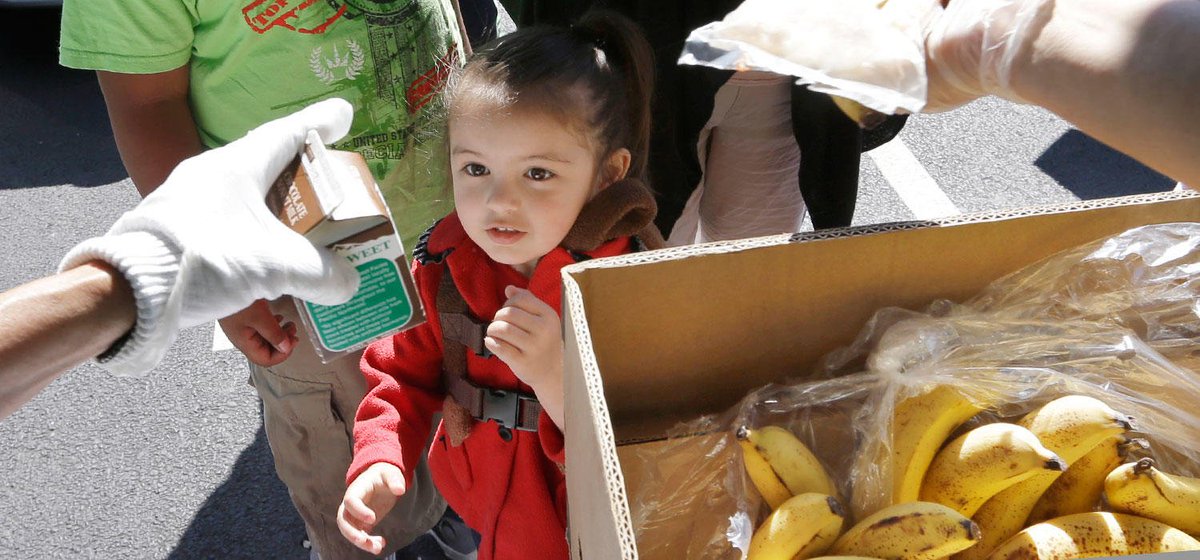THREAD
1/ What are 2nd and 3rd-degree impacts of #COVID19 #COVIDimpacts keeping you up? https://abs.twimg.com/emoji/v2/... draggable="false" alt="😔" title="Pensive face" aria-label="Emoji: Pensive face">
https://abs.twimg.com/emoji/v2/... draggable="false" alt="😔" title="Pensive face" aria-label="Emoji: Pensive face">
For us, it& #39;s anything related to human #health, #security, #safety and #shelter
But today, we want to bring attention to the extremes of food insecurity and hunger caused by #pandemic
1/ What are 2nd and 3rd-degree impacts of #COVID19 #COVIDimpacts keeping you up?
For us, it& #39;s anything related to human #health, #security, #safety and #shelter
But today, we want to bring attention to the extremes of food insecurity and hunger caused by #pandemic
2/ According to the World Food Programme (WFP):
265 Million people could face acute food insecurity - DOUBLE last year& #39;s total.
Where are these vulnerable populations? They& #39;re in countries already ravaged by conflict, climate change, and economic crisis.
265 Million people could face acute food insecurity - DOUBLE last year& #39;s total.
Where are these vulnerable populations? They& #39;re in countries already ravaged by conflict, climate change, and economic crisis.
3/ In South Africa:
"The lean season has been very, very hard for the last three years with almost no rain and poor harvests which have left 45 million people food insecure with 8.1 million supported by the WFP.” - @LolaCastroWFP
TY @guardian: https://www.theguardian.com/global-development/2020/apr/21/millions-hang-by-a-thread-extreme-global-hunger-compounded-by-covid-19-coronavirus">https://www.theguardian.com/global-de...
"The lean season has been very, very hard for the last three years with almost no rain and poor harvests which have left 45 million people food insecure with 8.1 million supported by the WFP.” - @LolaCastroWFP
TY @guardian: https://www.theguardian.com/global-development/2020/apr/21/millions-hang-by-a-thread-extreme-global-hunger-compounded-by-covid-19-coronavirus">https://www.theguardian.com/global-de...
4/ @UN reports the highest level of acute food insecurity + malnutrition documented since 2017.
"More than half (73 million) covered by [our] report live in Africa; 43 million live in the Middle East and Asia; 18.5 million live in Latin America and the Caribbean."
"More than half (73 million) covered by [our] report live in Africa; 43 million live in the Middle East and Asia; 18.5 million live in Latin America and the Caribbean."
5/ "In hotspots, humanitarian contributions to food security, agriculture and nutrition increased from $5.3 billion in 2016 to $6.5 billion in 2018 – in many countries far outweighing that of development assistance." https://www.unicef.org/press-releases/global-report-food-crises-reveals-scope-food-crises-covid-19-poses-new-risks">https://www.unicef.org/press-rel...
6/ What can be done beyond humanitarian aid?
A LOT.
They must come from governments and steady leadership.
#1: Implement social protection measures, like cash transfers and direct rations purchased directly from farmers. To protect food affordability and supply chains.
A LOT.
They must come from governments and steady leadership.
#1: Implement social protection measures, like cash transfers and direct rations purchased directly from farmers. To protect food affordability and supply chains.
7/
#2: Keep ports open to maintain integrity of global supply chain for seeds, fertilizers, perishables, etc.
Treat port workers as essential and prioritize their health.
Isolate staff by providing accommodations on-site.
Adopt strict hygiene standards at ports.
#2: Keep ports open to maintain integrity of global supply chain for seeds, fertilizers, perishables, etc.
Treat port workers as essential and prioritize their health.
Isolate staff by providing accommodations on-site.
Adopt strict hygiene standards at ports.
/8
#3: Mitigate food shortage with policy measures:
Government must relax food import tariffs - important under normal circumstances to protect local farmers - to prevent regional food shortages. https://atlanticcouncil.org/blogs/geotech-cues/mitigating-the-impacts-of-global-food-crises-associated-with-covid-19/">https://atlanticcouncil.org/blogs/geo...
#3: Mitigate food shortage with policy measures:
Government must relax food import tariffs - important under normal circumstances to protect local farmers - to prevent regional food shortages. https://atlanticcouncil.org/blogs/geotech-cues/mitigating-the-impacts-of-global-food-crises-associated-with-covid-19/">https://atlanticcouncil.org/blogs/geo...
/9
In our own communities, we can& #39;t neglect families with food-insecure children and parents whose food needs were previously partly met by school.
Feed America released a new report: "The number of food insecure children could escalate to 18 million...
In our own communities, we can& #39;t neglect families with food-insecure children and parents whose food needs were previously partly met by school.
Feed America released a new report: "The number of food insecure children could escalate to 18 million...
10/ ...because of the COVID-19 pandemic. The highest total ever reported by USDA in the 25 years that it has been measuring food insecurity was 17.2 million in 2009 at the height of the Great Recession." https://www.prnewswire.com/news-releases/feeding-america-research-projects-child-food-insecurity-could-hit-all-time-high-due-to-covid-19-301045446.html">https://www.prnewswire.com/news-rele...
11/
How can you help?
Become aware of the issue, share widely, and consider donating where we can.
U.S. through Feeding America: https://bit.ly/2VtI5Wj
Globally">https://bit.ly/2VtI5Wj&q... through World Food Programme: https://bit.ly/3axjl3T ">https://bit.ly/3axjl3T&q...
How can you help?
Become aware of the issue, share widely, and consider donating where we can.
U.S. through Feeding America: https://bit.ly/2VtI5Wj
Globally">https://bit.ly/2VtI5Wj&q... through World Food Programme: https://bit.ly/3axjl3T ">https://bit.ly/3axjl3T&q...

 Read on Twitter
Read on Twitter For us, it& #39;s anything related to human #health, #security, #safety and #shelterBut today, we want to bring attention to the extremes of food insecurity and hunger caused by #pandemic" title="THREAD 1/ What are 2nd and 3rd-degree impacts of #COVID19 #COVIDimpacts keeping you up? https://abs.twimg.com/emoji/v2/... draggable="false" alt="😔" title="Pensive face" aria-label="Emoji: Pensive face">For us, it& #39;s anything related to human #health, #security, #safety and #shelterBut today, we want to bring attention to the extremes of food insecurity and hunger caused by #pandemic" class="img-responsive" style="max-width:100%;"/>
For us, it& #39;s anything related to human #health, #security, #safety and #shelterBut today, we want to bring attention to the extremes of food insecurity and hunger caused by #pandemic" title="THREAD 1/ What are 2nd and 3rd-degree impacts of #COVID19 #COVIDimpacts keeping you up? https://abs.twimg.com/emoji/v2/... draggable="false" alt="😔" title="Pensive face" aria-label="Emoji: Pensive face">For us, it& #39;s anything related to human #health, #security, #safety and #shelterBut today, we want to bring attention to the extremes of food insecurity and hunger caused by #pandemic" class="img-responsive" style="max-width:100%;"/>
![4/ @UN reports the highest level of acute food insecurity + malnutrition documented since 2017. "More than half (73 million) covered by [our] report live in Africa; 43 million live in the Middle East and Asia; 18.5 million live in Latin America and the Caribbean." 4/ @UN reports the highest level of acute food insecurity + malnutrition documented since 2017. "More than half (73 million) covered by [our] report live in Africa; 43 million live in the Middle East and Asia; 18.5 million live in Latin America and the Caribbean."](https://pbs.twimg.com/media/EWQqRxGUMAYIhsT.jpg)



